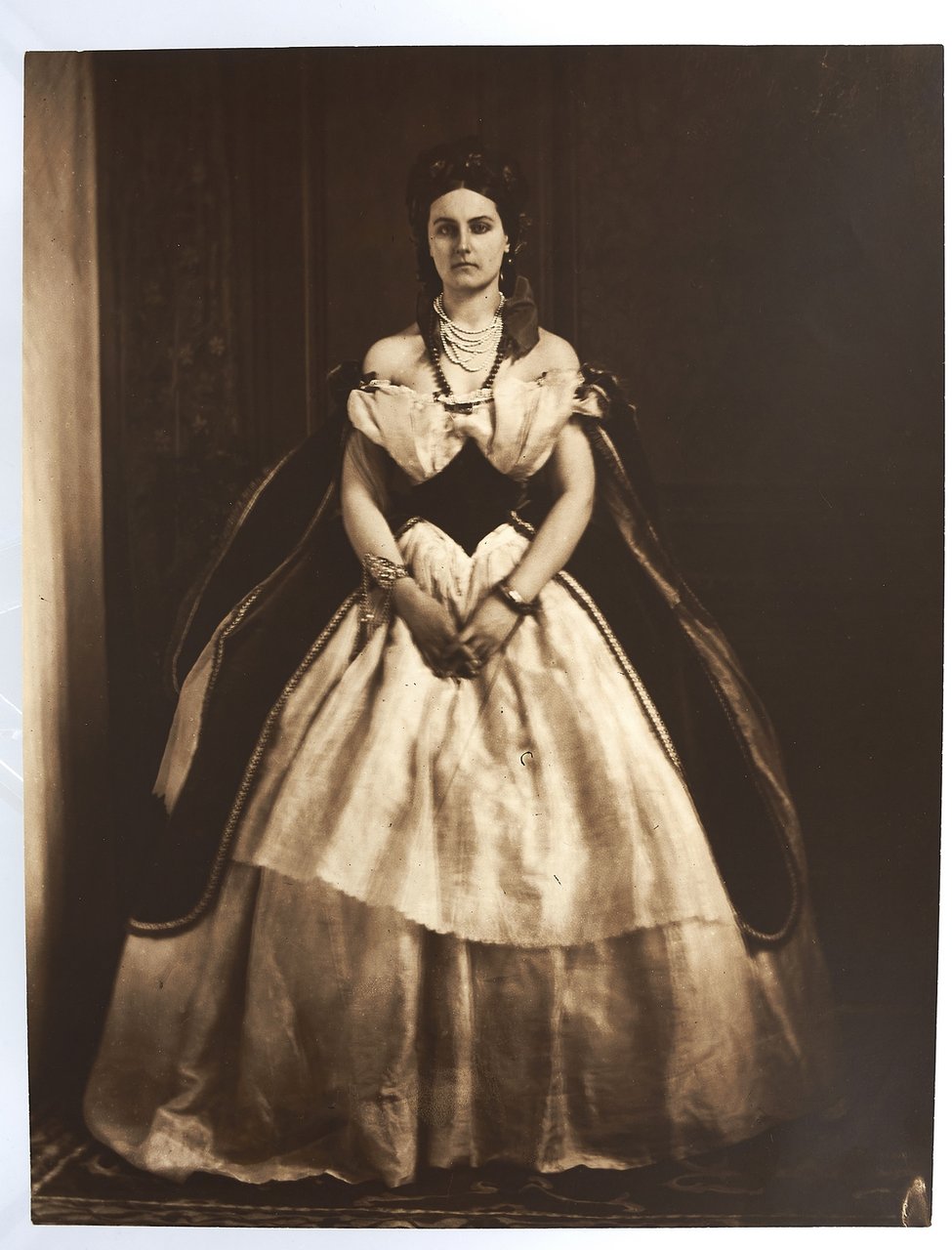Detalles
Autor
[Oldoïni, Comtesse De Castiglione Virginia] Pierson Pierre Louis
Materia
Histoire|XIXème siècle
Descripción
- S.l. 1895-1910, 27,9x35,9cm, une feuille. - | A superb photograph of the pioneer of photographic self-portraiture | 1895-1910 | 27,9 x 35,9 cm | a framed and mounted photograph Portrait by Pierre-Louis Pierson of Virginia Oldoïni, Countess of Castiglione. Original silver print, enlarged from the original glass plate negative by Maison Braun circa 1895-1910, matted and framed. Penciled number on verso. *** In July 1856, the Countess de Castiglione visited the Paris studio of the Mayer brothers and Pierre Louis Pierson, photographer to the imperial court. Her first portraits marked the beginning of a collaboration that would last almost forty years. The dandy writer Robert de Montesquiou wrote The Divine Countess (1913) in her honor and was fascinated by her photo portraits which he devotedly collected. She inspired Emile Zola's bewitching character of Clorinde Balbi in His Excellency Eugène Rougon (1876). This photograph was taken at the creative peak of the Countess of Castiglione who brought the Emperor of France and the King of Italy to her feet. The "most beautiful woman of her century" is shown in an exquisite ball gown, true regalia of this ruler of Paris society whose self-portraits marked the history of photography. The countess left hundreds of photographic portraits in lieu of memoirs, recording her brilliant journey as an intrigante at the heart of the European courts. This portrait belongs to the most creative period of her artistic activity with photographer Pierson, between 1861 and 1867, during her second stay in Paris. Her appearances in society were already becoming rarer, after the whirlwind years of 1856-58 when she was a key figure in political intrigues between France and Italy. She purposefully chose her own costumes, angles, and shots for her portraits. Her techniques of self-portraits anticipated that of contemporary photographers such as Cindy Sherman, Sophie Calle and Claude Cahun. With her haughty bearing and scornful gaze, she offers an imposing silhouette worthy of a royal portrait, her fingers intertwined on her dress. The gold-embroidered corselet and dark "bookmark" skirt panels exploit the chiaroscuro of the photograph to their advantage. Her allure is further accentuated by her famous "Ceres" hairstyle, perched in a heavy braid above her head and tied with a wide bow resting nonchalantly on her bare shoulder. It was at a ball that the countess was first introduced to her most prestigious conquest Napoleon III and consummated her royal affair. The countess's life epically or tragically played out during balls, sometimes seen as Italy's liberator or as a scandalous demi-mondaine with excessively indecent outfits. Her faithful acolyte Pierson photographed her immediately after the events in which she was the main attraction. As she slipped from queen of high society to paranoid recluse, her obsession with photography prolonged those hours of social glory. Her portraits remain an immortal witness to those earlier social performances where she sported the same enigmatic gaze. A sublime portrait of the Castiglione in ball attire, a femme fatale wrapped in worn finery and armed only with the expressive power of her gaze. [FRENCH VERSION FOLLOWS] | Un superbe cliché de la pionnière de l'autoportrait photographique | Photographie de Pierson représentant la comtesse Virginia Oldoïni, comtesse de Castiglione. Tirage argentique, agrandissement d'après négatif sur verre par la Maison Braun vers 1895-1910, sous passe-partout et encadré. Numérotation au crayon au verso. *** En juillet 1856, la comtesse de Castiglione se rendit à l'atelier parisien des frères Mayer et de Pierre Louis Pierson, photographe de la cour impériale. Ses premières poses signent le début d'une collaboration qui durera près de quarante ans. L'écrivain dandy Robert de Montesquiou écrira La Divine Comtesse (1913) en son honneur et sera fasciné par ses portraits photographiques dont il assemblera une grande collection. Elle a

Descubre cómo utilizar
Descubre cómo utilizar

